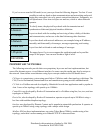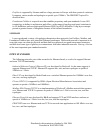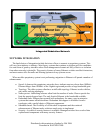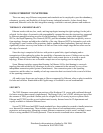
7-Application
6-Presentation
5-Session
4-Transport
3-Network
2-Data Link
1-Physical
OSI MODEL
If you’ve never seen the OSI model, avert your eyes from the following diagram. Too late. It’s not
possible to read any book on data communications and networking and avoid
seeing this conceptual view of a generic network architecture. Fortunately, we
will spend most of our time in layers one and two, which is where Ethernet
operates.
To clarify terms, the physical layer deals with the transmission and
synchronism of data and physical interface definition.
Layer two deals with the sending and receiving of data, validity of the data
and retransmission, and access to the data link among other functions.
Layer three deals with network addresses, one example being an IP address,
assembly and disassembly of messages, message sequencing, and routing.
Layer four deals with end-to-end exchange of messages.
The upper layers five to seven support the application and are beyond the
scope of this paper. You can now breathe a sigh of relief.
PROPRIETARY NETWORKS
The following networks provide their own proprietary layer one and two implementations, but
some offer alternate access via an Ethernet interface. In some cases the media may also be unique to
the network. Some define an architecture using layer concepts similar to the OSI model above.
CANopen is a proprietary system using speed below 1 Mbit/sec and a line topology with drops. The
CIA (Can-in-Automation) international user and manufacturer group provides standardization.
CC-Link is a Fieldbus network developed by Mitsubishi for real-time applications and is popular in
Asia. It uses a line topology with speeds up to 10Mbit/s.
ControlNet was developed by Rockwell Automation and is a Fieldbus using line, bus, tree, and star
topologies at 5Mbit/s.
DeviceNet, also developed by Rockwell Automation, operates at speeds up to 500 Kbit/s using a
bus line with trunkline/dropline topology.
Interbus was developed by Phoenix Contact and is popular in automobile production. It operates at
speeds up to 2Mbit/s using a ring topology with a unique cable design.
Modbus-IDA has three implementations, one using Token Bus at 2Mbit/s, another using a line
topology, and a third version running over Ethernet/TCP/IP is discussed later.
Distributed with permission of author by ISA 2006
Presented at ISA EXPO 2006












